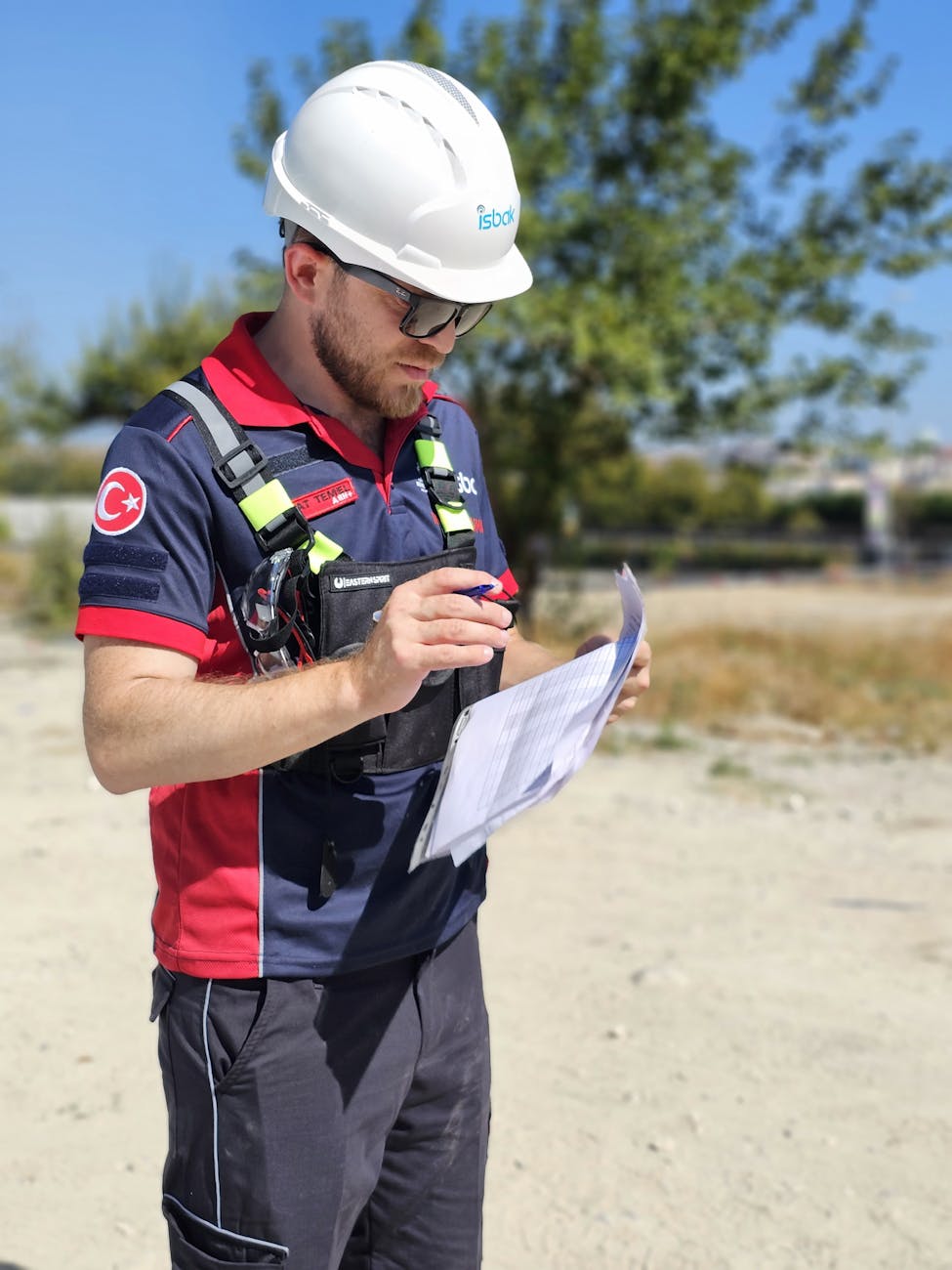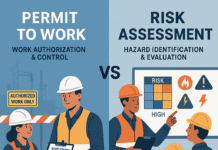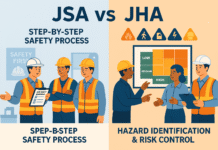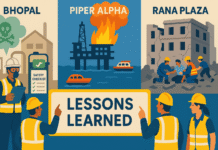
Difference Between HIRA and JSA | Explained with Example | Free Download PPT
Introduction
In today’s fast-paced industrial world, ensuring safety is paramount. Two common methods used to promote workplace safety are Hazard Identification and Risk Assessment (HIRA) and Job Safety Analysis (JSA). Although they share the common goal of minimizing workplace risks, they are distinct in their processes, purposes, and applications. Let’s dive deep into these two safety strategies to understand their differences, applications, and importance in the workplace.
1. HIRA (Hazard Identification and Risk Assessment)
Definition: HIRA is a systematic approach to identifying all potential hazards in a workplace, evaluating the risks associated with those hazards, and determining control measures. It is typically broader in scope and covers all workplace hazards.
Purpose: The goal of HIRA is to identify any hazards that could cause harm, assess their risk levels, and implement control measures to minimize these risks. HIRA is often conducted before any work begins and is updated periodically or when new hazards arise.
Example: Imagine a construction site. A HIRA would assess hazards in multiple areas such as:
- Working at Heights: Identifying risks of falls, assessing the likelihood and severity, and implementing controls like guardrails or safety harnesses.
- Heavy Machinery Operation: Evaluating hazards related to operating cranes or forklifts, assessing the risk of collision or tipping, and establishing safety protocols such as operator training and regular maintenance.
- Handling Hazardous Materials: Identifying chemicals or substances that could cause burns, respiratory issues, or explosions. This would involve assessing risks and implementing measures like proper storage, PPE, and safety data sheets.
HIRA Example: Construction Site Assessment
Project: Residential Building Construction
Scope: Entire Construction Site
| Hazard | Risk | Risk Level | Control Measures |
|---|---|---|---|
| Working at Heights | Falling from height | High | Install guardrails, use safety harnesses, conduct training. |
| Heavy Machinery Operation | Collision, tipping | Medium | Operator certification, clear signaling, regular maintenance. |
| Handling Hazardous Materials | Chemical burns, respiratory issues | High | Use PPE (gloves, masks), proper storage, safety data sheets. |
| Electrical Hazards | Shock, fire hazards | High | Lockout/tagout procedures, insulating equipment. |
| Slips and Falls | Injuries from uneven surfaces, loose tools | Medium | Clear pathways, use of slip-resistant mats. |
Summary: This HIRA provides an overall view of hazards at the construction site, classifying them by risk level and identifying control measures for each hazard category.
2. JSA (Job Safety Analysis)
Definition: JSA is a process focused specifically on individual tasks. It breaks down a job into specific steps, identifies hazards at each step, and determines control measures to prevent incidents. JSA is more detailed in its analysis of how a particular task is performed and how risks can be minimized.
Purpose: JSA aims to make tasks safer by ensuring that each step is performed with the least amount of risk. It’s especially useful for jobs with high-risk activities or new tasks.
Example: Let’s consider a task like installing scaffolding at a construction site.
- Step 1: Transporting Materials: Identifying the hazards of lifting heavy materials, potential injuries from improper lifting techniques, or risks of slips during transportation.
- Step 2: Assembling Scaffolding: Recognizing hazards such as falls, identifying steps to check stability and ensuring team members are wearing appropriate harnesses and PPE.
- Step 3: Inspecting the Scaffolding: This step might involve identifying any potential hazards before workers use the scaffolding, such as loose bolts or improper setup, and establishing a checklist to ensure all parts are secure.
JSA Example: Task-Specific Analysis for Installing Scaffolding
Project: Residential Building Construction
Task: Installing Scaffolding
| Step | Hazard | Risk Level | Control Measures |
|---|---|---|---|
| 1. Transporting Materials | Back injuries, slips, trips | Medium | Use proper lifting techniques, ensure clear pathways. |
| 2. Assembling Scaffolding | Falls, instability | High | Wear harnesses, check stability, secure base. |
| 3. Securing Bolts and Rails | Pinched fingers, equipment failure | Medium | Use gloves, double-check bolts and connections. |
| 4. Inspecting Scaffolding | Loose parts, structural failure | High | Conduct inspection checklist before use. |
Summary: This JSA focuses on a specific task—installing scaffolding—by breaking down each step, identifying potential hazards, and implementing step-by-step safety controls.
Key Components of HIRA
- Identifying Potential Hazards: HIRA starts with identifying any physical, chemical, biological, or ergonomic hazards.
- Assessing the Risks: Each hazard is evaluated based on its potential to cause harm, considering factors like frequency and severity.
- Risk Control Measures: Controls are put in place to manage or eliminate identified risks, often using a hierarchy of control measures.
Key Components of JSA
- Breaking Down Tasks: JSA begins by breaking down a job into its individual steps to evaluate each component of the task.
- Identifying Hazards for Each Task: Hazards associated with each specific step are identified.
- Risk Control Measures: After hazards are identified, control measures are introduced to minimize or eliminate risks.
The Fundamental Differences Between HIRA and JSA
- Scope and Application: HIRA applies to overall processes, while JSA focuses on individual tasks.
- Focus Areas: HIRA covers hazards affecting the entire workplace, whereas JSA zeroes in on specific job tasks.
- Timing and Frequency of Assessments: HIRA is usually done periodically for general safety reviews, while JSA is often conducted before performing specific tasks, especially high-risk ones.
When to Use HIRA
HIRA is particularly useful in scenarios where overall workplace risk needs to be evaluated, such as in manufacturing, construction, or chemical industries. It’s a comprehensive approach suited for identifying broad-spectrum hazards that could affect workers in various roles.
When to Use JSA
JSA is most effective when applied to specific tasks within a job. For example, industries like oil and gas, construction, and heavy manufacturing use JSA to pinpoint risks in high-hazard activities, helping to keep workers safe during specific operations.
How HIRA Enhances Workplace Safety
HIRA plays a crucial role in reducing risks by:
- Risk Reduction: By addressing hazards across the workplace, HIRA reduces the overall risk landscape.
- Compliance with Safety Standards: HIRA helps companies meet regulatory requirements, which are essential for maintaining safety compliance.
How JSA Enhances Workplace Safety
JSA enhances safety by:
- Task-Specific Safety Protocols: JSA ensures that each task is reviewed, allowing workers to follow clear, safe procedures.
- Improved Communication on Safety Hazards: JSA promotes discussions about risks, improving hazard awareness among employees.
Similarities Between HIRA and JSA
While different in approach, HIRA and JSA share several similarities:
- Shared Goals: Both aim to reduce hazards and ensure a safe working environment.
- Steps in Risk Control: Each method uses risk assessments and control measures to manage workplace dangers.
Benefits of Integrating HIRA and JSA
By integrating HIRA and JSA, organizations can cover a wider range of risks:
- Comprehensive Safety Coverage: Using both methods provides a thorough assessment of both general and task-specific hazards.
- Enhanced Worker Awareness and Involvement: Employees become more engaged in safety practices, increasing their commitment to following protocols.
Challenges in Implementing HIRA and JSA
Common obstacles in HIRA and JSA implementation include time constraints, insufficient training, and resource limitations. Companies can overcome these by training employees, setting aside adequate time for assessments, and prioritizing safety in their budget.
Conclusion
Both HIRA and JSA are indispensable tools in workplace safety management. While HIRA focuses on identifying and assessing broader risks, JSA zeroes in on task-specific hazards. When combined, they create a robust safety framework that significantly minimizes the risk of accidents and injuries, promoting a safer workplace for everyone involved.
Risk Assessment vs Job Safety Analysis
What are the 5 Steps of a JSA?
5 Step Process of Risk Assessment
Frequently Asked Questions (FAQs)
- What is the main purpose of HIRA?
HIRA aims to identify, assess, and control hazards in the overall work environment, ensuring comprehensive safety management. - Can HIRA and JSA be used together?
Yes, using both HIRA and JSA offers a more thorough approach to safety, covering general and specific hazards. - Which industries benefit most from HIRA and JSA?
Industries such as construction, oil and gas, and manufacturing gain significant benefits from both HIRA and JSA due to the high-risk nature of their work. - How often should HIRA and JSA assessments be conducted?
HIRA is generally done periodically, while JSA should be conducted before high-risk tasks or when job processes change. - What’s the difference between risk assessment and risk management?
Risk assessment identifies and evaluates hazards, while risk management involves implementing measures to control or eliminate those hazards.
























